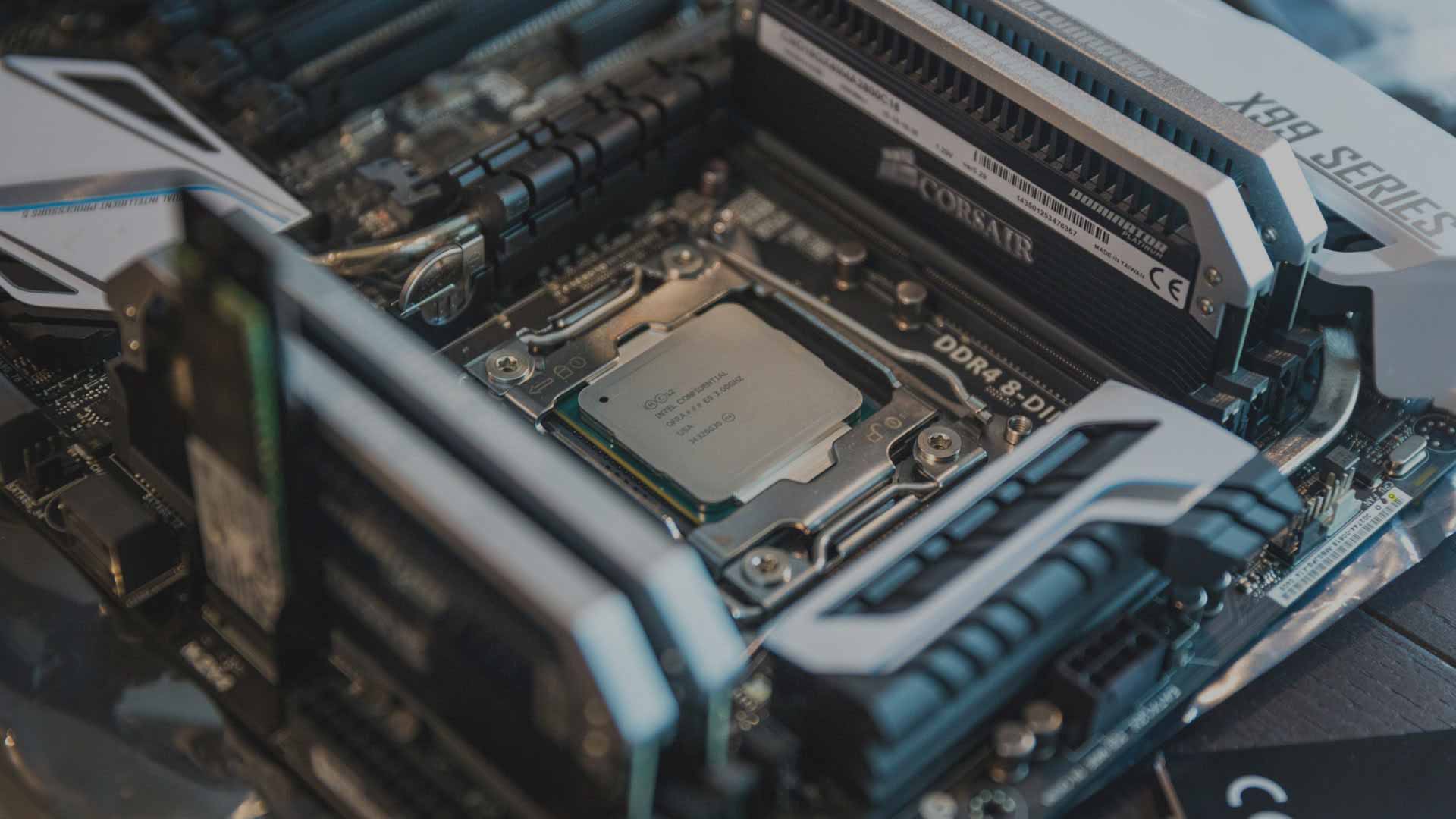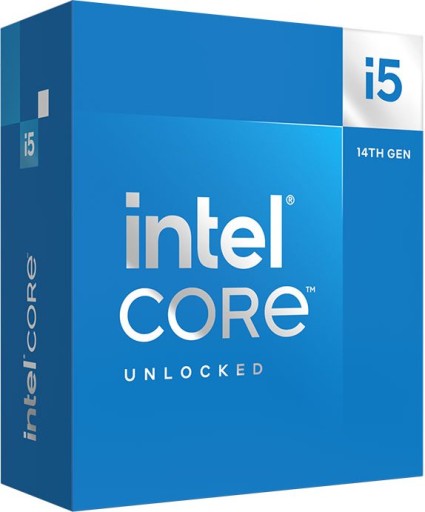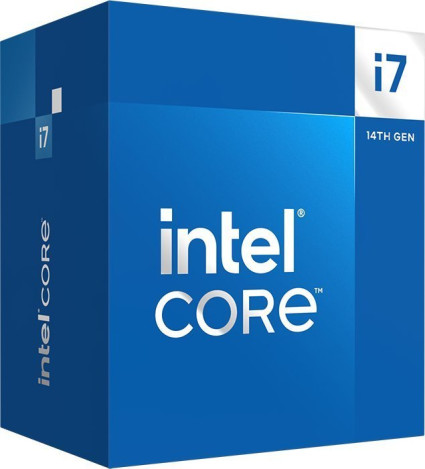
Intel Core i5-14600K vs. Intel Core i7-14700
In diesem Vergleich von Intel Core i5-14600K versus Intel Core i7-14700 vergleichen wir die technischen Daten der beiden GPUs. Welche Grafikkarte ist schneller? Hier gibt es FPS & Benchmarks in Gaming und Anwendungen. Außerdem Daten zu Verbrauch, Effizienz (FPS pro Watt) und Preis-Leistung (FPS pro Euro).

Allgemeine Informationen
| Günstigster Preis |
|
|
| Serie | Intel Core i-14000 | Intel Core i-14000 |
| Chip-Architektur | Raptor Cove (P-Core) + Gracemont (E-Core) | Raptor Cove (P-Core) + Gracemont (E-Core) |
| Codename | Raptor Lake-S | Raptor Lake-S |
| Produktname | Intel Core i5-14600K | Intel Core i7-14700 |
Spezifikationen
Die Anzahl der Rechenkerne, die maximale Taktrate und die Größe des Cache können sich auf die Leistung in Spielen und Anwendungen auswirken. Mit 14 Kernen bietet der Intel Core i5-14600K deutlich weniger Kerne als der Intel Core i7-14700 mit 20 Rechenkernen. Der maximale Takt liegt beim Intel Core i5-14600K mit 5.30 GHz etwas niedriger als beim Intel Core i7-14700 mit 5.40 GHz. Der Cache ist beim Intel Core i5-14600K mit 20 MB L2-Cache + 24 MB L3-Cache zu 28 MB L2-Cache + 33 MB L3-Cache deutlich kleiner als beim Intel Core i7-14700.
| Kerne (Gesamt) | 14 | 20 |
| Anzahl P-Cores | 6C | 8C |
| Anzahl E-Cores | 8c | 12c |
| Basis-Takt | 3.50 GHz | 2.10 GHz |
| Takt P-Cores | 3.50 GHz | 2.10 GHz |
| Takt E-Cores | 2.60 GHz | 1.50 GHz |
| Turbo-Takt | 5.30 GHz | 5.40 (Turbo Boost Max 3.0) GHz |
| Turbo P-Cores | 5.30 GHz | 5.40 (Turbo Boost Max 3.0) GHz |
| Turbo E-Cores | 4.00 GHz | 4.20 GHz |
| Gesamter L2-Cache | 20 MB | 28 MB |
| Gesamter L3-Cache | 24 MB | 33 MB |
| Fertigung | Intel 7 | Intel 7 |
| Rechenleistung | - | - |
| Leistungsaufnahme (TDP) | 125W (Processor Base Power) 181W (Maximum Turbo Power) |
65W (Processor Base Power) 219W (Maximum Turbo Power) |
Mainboard-Kompatibilität
Sowohl der Intel Core i5-14600K als auch der Intel Core i7-14700 setzen auf den Sockel Intel 1700.
| Sockel | Intel 1700 | Intel 1700 |
| Chipsatz-Eignung | B660, B760, H610, H610E, H670, H770, Q670, Q670E, R680E, W680, Z690, Z790 | B660, B760, H610, H610E, H670, H770, Q670, Q670E, R680E, W680, Z690, Z790 |
| PCIe-3.0-Lanes | - | - |
| PCIe-4.0-Lanes | 4x | 4x |
| PCIe-5.0-Lanes | 16x | 16x |
RAM-Kompatibilität
Während Sie beim Intel Core i5-14600K bis zu 192 GB vom Typ DDR4/DDR5 im Dual Channel verbauen können, unterstützt der Intel Core i7-14700 bis zu 192 GB DDR4/DDR5 Arbeitsspeicher.
| Speicher-Controller | DDR4/DDR5 | DDR4/DDR5 |
| Anzahl Speicherkanäle | Dual Channel | Dual Channel |
| max. Speichermenge | 192 GB | 192 GB |
| ECC-Unterstützung | ✓ | ✓ |
Grafik
| iGPU | ✓ | ✓ |
| iGPU-Modell | Intel UHD Graphics 770 | Intel UHD Graphics 770 |
| iGPU-Takt | 0,30-1,50GHz | 0,30-1,60GHz |
| iGPU-Einheiten | 2Xe/32EU/256SP | 2Xe/32EU/256SP |
| iGPU-Rechenleistung | 0.77 TFLOPS (FP32) | 0.82 TFLOPS (FP32) |
| iGPU-Architektur | Xe-LP / Gen 12.2, Codename "Raptor Lake GT1" | Xe-LP / Gen 12.2, Codename "Raptor Lake GT1" |
| iGPU-Interface | DP 1.4a (7680x4320@60Hz), eDP 1.4b (5120x3200@120Hz), HDMI 2.1 (4096x2160@60Hz) | DP 1.4a (7680x4320@60Hz), eDP 1.4b (5120x3200@120Hz), HDMI 2.1 (4096x2160@60Hz) |
| iGPU-Funktionen | 4x Display Support, 2x Codec Engines / Video Decode Boxes, Intel Clear Video HD, Intel Quick Sync Video, AV1 decode, H.265 encode/decode, VP9 encode/decode, HDCP 2.3, DirectX 12, OpenGL 4.5, OpenCL 3.0, Vulkan 1.0 | 4x Display Support, 2x Codec Engines / Video Decode Boxes, Intel Clear Video HD, Intel Quick Sync Video, AV1 decode, H.265 encode/decode, VP9 encode/decode, HDCP 2.3, DirectX 12, OpenGL 4.5, OpenCL 3.0, Vulkan 1.0 |
Sonstiges
| Freier Multiplikator | ✓ | - |
| Stepping | B0, Spec Code: SRN43 | B0, Spec Code: SRN40 |
| Heatspreader-Kontaktmittel | Metall/verlötet | - |
| Temparatur max. | 100°C (Tjunction) | 100°C (Tjunction) |
| Fernwartung | - | - |
| Einführung | 2023/Q4 (16.10.2023) | 2024/Q1 (8.1.2024) |
| Herstellergarantie | 5 Jahre bei Intel Boxed-Prozessoren durch erweiterte Garantieunterstützung (Info EN) | 5 Jahre bei Intel® Boxed-Prozessoren durch erweiterte Garantieunterstützung (Info EN) |
CPU-Funktionen
| AES-NI | ✓ | ✓ |
| AVX | ✓ | ✓ |
| AVX2 | ✓ | ✓ |
| Boot Guard | ✓ | ✓ |
| CET | ✓ | ✓ |
| DL Boost | ✓ | ✓ |
| EIST | ✓ | ✓ |
| GNA 3.0 | ✓ | ✓ |
| Idle States | ✓ | ✓ |
| Instruction Set | ✓ | ✓ |
| ISM | ✓ | ✓ |
| MBEC | ✓ | ✓ |
| Optane Memory Support | - | - |
| OS Guard | ✓ | ✓ |
| Secure Key | ✓ | ✓ |
| Speed Shift | ✓ | ✓ |
| SSE4.1 | ✓ | ✓ |
| SSE4.2 | ✓ | ✓ |
| Thermal Monitoring | ✓ | ✓ |
| VMD | ✓ | ✓ |
| VT-d | ✓ | ✓ |
| VT-x | ✓ | ✓ |
| VT-x EPT | ✓ | ✓ |
| XD Bit | ✓ | ✓ |

